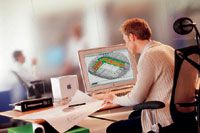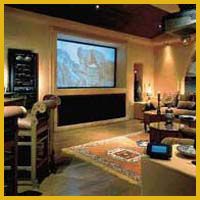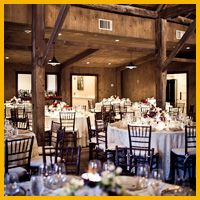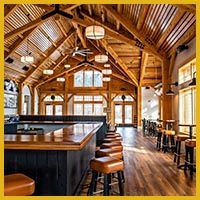Predicting the Behavior of Sound Systems in Different Kinds of Facilities
As a Certified Bose Modeler®, Tree Ridge helps you see and hear how sound will impact your facility and how your facility impacts the sound using sophisticated Bose-patented tools. We create an acoustical model of your facility to determine the preferred configuration and location of speaker systems in existing venues or from blueprints.
FAQ
Tree Ridge uses The Modeler® design program to create a three-dimensional representation of your business or facility. A color printout then graphically depicts the sound system's characteristics including loudness, sound coverage, and speech intelligibility. The patented Modeler® Design program helps to ensure your client spends money only for equipment they need.
When mechanical and aesthetic details are important, Tree Ridge simulates the visual effect speakers and speaker clusters will have in your space.
The award-winning Auditioner® system allows you to hear how your system will sound form any spot in your facility, even if it isn't built yet.
Proper speaker placement is a science
Using the proprietary Bose® Modeler® program, multiple speakers can be placed in computerized models of rooms with differing shapes and sizes. The program allows speakers to be aimed, moved, turned on or off, amplified, and for time delay values to be set. It also factors in the acoustical properties of surface materials planned for the venue. All of this can be accomplished from architectural plans-the building doesn't even have to exist.

Everything affects sound
Tree Ridge can use the Modeler® program to see the results of obstructions and reflections. We can even explore how the number of people in a facility affects its sound. Obstruction occurs when surfaces such as balconies and overhangs block the sound. Reflections, when managed properly, add spaciousness and ambiance. But when uncontrolled, they create annoying echoes. Even the audience affects sound quality because fewer people in the stands expose more of the hard surfaces, increasing reverberation.
A visual map of the audio performance
When all these factors are programmed into the Modeler® software, changes can be seen before any equipment is installed. You can even print out color-coded maps. For an even more accurate prediction of the venue's sound, the Modeler® program's output is exported to our award-winning Auditioner® audio demonstrator. You actually hear the simulated sound. Modeler® design program technology is used worldwide, in a variety of large venue applications.
Auditioner® Audio Demonstrator Technology
In the past, the only way to accurately judge a sound system's performance was to listen after it was fully installed. Only after the entire renovation or construction process was complete could you hear the real sound for the first time. Then it was too late for any meaningful change. Now, Auditioner® system technology makes it possible to actually hear and judge for yourself the precise sound you'll have in a building. And you can do it before a single piece of audio equipment is installed. Auditioner technology allows sound designers and consultants to work iteratively with customers to factor in numerous variables, reposition speakers, try experimental solutions and make the necessary changes and improvements before a single piece of equipment is installed. You can even do all that before construction or renovation begins.



